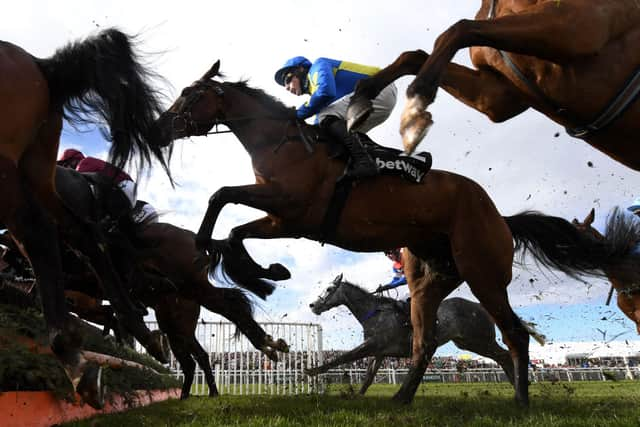Grand National 2023 terminology: what does nap and sp mean in horse racing - what is a racecard?
and live on Freeview channel 276
The big festival attracts a worldwide audience and coverage across the print and online media, television and radio may well throw up a whole host of unusual terms used in horse racing.
NationalWorld provides a handy guide of horse racing terms so read on if you wish to know why a stewards enquiry is taking place, why a horse is described as a nap or how long a furlong is.
What is a non-runner?
Advertisement
Hide AdAdvertisement
Hide AdA non-runner is a horse that has been withdrawn from a race prior to the start.
What does it mean when a horse wins by a length?
This is a unit of measurement used in racing and is literally the length of a horse. It will be used to explain how far one horse is ahead of another.
What does a nose, neck or head mean?
These are all units of measurement that are smaller than a length and are the equivalent to the body part on each horse.
What is a photo finish?
This is when two or more horses cross the line at roughly the same time. The winner will be decided by an analysis of a photo taken of the finish line.
What is a dead heat?
Advertisement
Hide AdAdvertisement
Hide AdThis is when a photo finish fails to produce a winning horse. If this happens both horses will be declared as the winner and the next horse is classed as third-placed.
What is a racecard?
Much like a programme at other events, this is a list of races taken place on the day of the meeting. It will contain crucial information such as the form of the horse, the jockey and trainers names and details of the racecourse.
What is a handicap?
This will be where better horses will carry more weights than their lesser races rivals with the aim of giving all horses an equal chance of winning.
What is a furlong?
A furlong is a measurement of distance and is roughly around 200 metres and eight furlongs make up a mile.
Advertisement
Hide AdAdvertisement
Hide AdWhat is the difference between all-weather, national hunt and flat racing?
All-weather racing takes place on an artificial surface and does not contain hurdles or jumps. Flat racing takes place with hurdles or jumps on turf and national hunt is another way to describe races with hurdles on turf.
What is the going?
This is also known as the ground and it indicates the state of the track. Firm means the turf is hard, heavy is when rainfall has caused the turf to go soft and good is the midway point between the two.


What is a stewards enquiry?
A stewards enquiry may take place if one horse claims an unfair advantage or interferes with another horse during the race. A race steward will analyse the footage of the race and speak to both jockeys to get their opinion before deciding if the outcome should be amended.
What are the rails?
Advertisement
Hide AdAdvertisement
Hide AdQuite often you hear a commentator say a horse is coming up on the rails. The rails are the white plastic railings that run around the course and a horse may run against the rails.
What is the SP mean?
This is the odds that are placed on a horse when the race gets underway.
What does each way mean?
Each way is a term used in betting and indicates that you have bet on a horse to finish in the first three or four depending on the number of horses in a race.
Half of your money will go on the horse to win and the other half will be placed on the horse finishing in the top three or four.
How do I know how many places there are in an each way bet?
Advertisement
Hide AdAdvertisement
Hide AdGenerally, a race containing five to eight horses will see the first two classed as placed.
With eight to fifteen that figure is extended to the first three horses and sixteen or more will class the first four past the winning line as placed.
What does NAP mean?
Horse racing experts will tip horses to win races and a nap is the horse they are most confident about with their advice.
What does ante-post mean?
These are bets placed long before the day of the race. Bookmakers will often offer bigger odds on these bets.
Comment Guidelines
National World encourages reader discussion on our stories. User feedback, insights and back-and-forth exchanges add a rich layer of context to reporting. Please review our Community Guidelines before commenting.